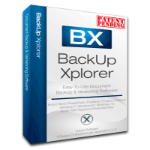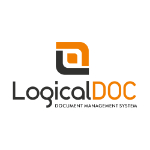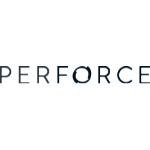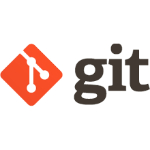List of Best Version Control System
Showing 10 of 15 productsJira is a project management tool that is trusted by thousands of teams worldwide. With its intuitive interface and customizable features, Jira helps teams of all sizes stay organized, collaborate efficiently, and deliver high-quality results. Whethe...Read Jira Reviews
BackUp Xplorer is a solution to securing and protecting your data. Whether youre looking to back up important documents or safeguard precious memories, our user-friendly software has got you covered. Say goodbye to the fear of losing your files and h...Read BackUp Xplorer Reviews
LogicalDOC is a and versatile document management solution that streamlines your organizations workflow, making document storage, retrieval, and collaboration efficient and effortless. With its user-friendly interface features, LogicalDOC is the perf...Read LogicalDOC Reviews
GitHub is a platform designed for developers, offering a streamlined way to collaborate on projects and manage version control. With its intuitive interface and robust features, GitHub has become the go-to choice for teams and individuals looking to...Read GitHub Reviews
Amplelogic EDMS is a document management system designed to simplify and streamline your organizations everyday operations. With its user-friendly interface features, Amplelogic EDMS is the perfect solution for efficient document management, collabor...Read Amplelogic EDMS Reviews
Helix Core is a software that streamlines the process of managing, versioning, and collaborating on large-scale digital assets. As a robust version control platform, it empowers teams to work more efficiently, securely, and effortlessly across variou...Read Helix Core Reviews
CERF ELN is a electronic lab notebook that streamlines data management and collaboration for scientific research. With its user-friendly interface features, CERF ELN provides researchers with a seamless digital workspace to organize, analyze, and sha...Read CERF ELN Reviews
Git is a version control system that empowers developers to collaborate and track changes in code seamlessly. From managing source code to facilitating team workflow, Git offers a streamlined is a solution for individual and enterprise-level projects...Read git Reviews
Bazaar is a solution to streamline your online business operations. With its user-friendly interface and robust features, Bazaar empowers entrepreneurs to effortlessly manage their inventory, sales, and customer relationships. Revolutionize your e-co...Read Bazaar Reviews
Plastic SCM, a powerful and versatile software designed to streamline version control for your projects. With its intuitive interface and extensive features, Plastic SCM offers efficient management of source code, documents, and assets for teams of a...Read Plastic SCM Reviews
- What Is Version Control System?
- Top Reasons Why Businesses Need Version Control System?
- What Are the Top Key Features of Version Control System?
- What Are the Top Benefits of Version Control System?
- What Are the Steps to Choose the Right Version Control System?
- What Are the Types of Version Control System for Different Industries?
- What Are the Technology Trends for Best Version Control System?
- What Are the Deployment Options for Version Control System?
What Is Version Control System?
Version control systems (VCS) are software solutions specifically developed to facilitate the monitoring and management of file modifications throughout their lifespan. A version control software (VCS) is designed to monitor and record all modifications made to a file, enabling users to access and examine earlier iterations of the file, and if necessary, restore a previous version of the file.
This feature becomes particularly advantageous in a collaborative setting, facilitating concurrent participation of numerous users in a shared project and seamless exchange of their contributions.
Version control systems serve as a central storage and tracking mechanism for various forms of digital content, including but not limited to source code, pictures, and text documents. This implies that each time a file undergoes modification, the Version Control System captures a snapshot of the alteration and archives it within the repository.
This feature provides users with the capability to access and examine prior iterations of a file, facilitating the resolution of disagreements or modifications that may have transpired.
Central version control systems also offer a mechanism for ensuring the integrity and security of files by generating backups of prior versions, thus ensuring the perpetual safety of data. This feature enables users to promptly restore previous versions of a file or undo unintended modifications, ensuring the preservation of the original content.
In general, the utilization of a top version control system facilitates the seamless monitoring of modifications made to a file, fosters collaborative efforts among several users, and ensures the safeguarding of data integrity.
Top Reasons Why Businesses Need Version Control System?
1. Increased Collaboration: Version Control Systems (VCS) offer an effective means of facilitating collaboration in project and software development settings, enabling concurrent involvement of several users or teams in a shared project.
2. Easier Tracking: Version Control Systems (VCS) offer a streamlined mechanism for monitoring modifications performed during the software development lifecycle, enabling developers to ascertain the individuals responsible for certain alterations and the corresponding timestamps.
3. Improved Flexibility: Version Control Systems (VCS) provide developers with the ability to experiment with different versions of code, mitigating concerns about irreversible damage by offering built-in reversing capabilities.
4. Less Wasted Time: version control of software offers a mechanism for efficiently identifying disparities among different iterations of code, hence minimizing the duration required to identify and rectify software defects.
5. More Reusable Code: The version control system tool enables developers to duplicate or integrate segments of pre-existing code for the purpose of reutilization in alternative projects.
6. Increased Security: This software offers the advantage of remote code backup, hence mitigating the risk of data loss and enhancing security measures.
7. Faster Releases: The best version control system facilitates the efficient management of both existing and new software versions, hence enabling the reduction of software development cycles.
8. Increased Quality Control: It plays a significant role in mitigating errors and enhancing the precision of developers, thus contributing to the overall improvement in the quality of the final product.
9. More Efficient Project Management: Top version control software offers a streamlined approach to the management of projects and tasks pertaining to software development.
10. VCS as a Delivery Mechanism for Software: Version control systems offer a streamlined approach for deploying software to end-users or other stakeholders.
11. Reproduction of Results: Version control enables the replication of outcomes from previous phases by furnishing a safeguarded repository of both the software and the procedural guidelines employed to manufacture the code.
12. Easier to Manage Large Projects: The utilization of version control facilitates the streamlined management of extensive and intricate software development endeavors.
13. Multiple Branches: Version control systems enable software engineers to construct distinct branches to work on various functionalities while maintaining isolation between them.
14. History of Changes: Version control systems offer a comprehensive record of modifications made to a codebase, facilitating the process of identifying and resolving errors.
15. Fewer Instances of Problems: Version control management systems play a crucial role in mitigating the occurrence of faults and issues during software development by promoting a systematic and organized approach.
What Are the Top Key Features of Version Control System?
1. Baseline Tracking: The best version control software facilitates the storage and management of modifications linked to a project throughout its lifespan. Various documents are systematically monitored and categorized as distinct baselines, with each set of modifications being recorded in relation to a particular baseline.
2. Branch Merging & Integration: A version control system facilitates the integration of many branches of a project. This practice ensures that the most recent iteration of a file is accurately represented across all branches.
3. Conflict Resolution: Central version control systems are utilized to effectively manage and resolve conflicts that arise when many branches of files are being worked on simultaneously. Conflicts are identified and effectively addressed, hence assuring the successful integration of all files.
4. Archive & History: Version control of software is utilized to facilitate the archival of data and maintain a comprehensive record of any modifications made over time. This feature facilitates the comprehensive recording of all modifications made to a project and its associated documents.
5. Audit Trails: Comprehensive audit trails are additionally furnished to guarantee the documentation of any previously executed action. This practice contributes to the maintenance of process integrity and facilitates the resolution of conflicts.
6. Access Controls: In addition to facilitating version management, version control system tools also include access control mechanisms that regulate the permissions granted to individuals for certain files. This practice aids in guaranteeing that only authorized individuals possess the ability to access certain project files, hence contributing to the preservation of data integrity.
7. Change Notification: Notifications are detected within the best version control software whenever modifications occur in the codebase. This practice aids in maintaining the synchronization between the version control software and the most recent modifications made to the project.
8. Collaboration: The top version control software is equipped with features that facilitate collaboration among multiple individuals working on a project. This practice aids in ensuring that the team employs the same code and collaborates on a unified version.
What Are the Top Benefits of Version Control System?
- Version control solutions facilitate effective collaborative development by monitoring modifications and enabling simultaneous participation of several developers in a shared project.
- Version control systems offer the capability to revert to any previous version of a project, enabling the resolution of bugs or the restoration of unintended modifications.
- Version control systems play a crucial role in maintaining the accuracy and integrity of projects and software by generating backups of files and monitoring the modifications made between different versions.
- Version control systems offer an improved method for organizing files and monitoring project advancement, hence facilitating code management and sharing.
- Version control systems facilitate effective development processes such as branching and merging, which serve to regulate the progression of code modifications among team members.
- Version control systems offer a comprehensive record of all modifications made to a project, facilitating the monitoring of software defects and enhancing the process of software development.
- Version control systems enhance the efficiency of software development and deployment by facilitating the streamlined distribution of new software versions.
- Version control systems have the potential to enhance project security by allowing only team-approved changes to be merged.
What Are the Steps to Choose the Right Version Control System?
1. Evaluate the requirements of your project: The initial step involves ascertaining the appropriate version control management software for the project, and distinguishing between distributed and centralized systems. Additionally, it is imperative to identify the essential features that need to be incorporated, including branching, tagging, and merging.
2. Assess the development team: This inquiry seeks to ascertain the technical proficiencies possessed by the developers, as well as the instruments with which they are already acquainted.
3. Determine scalability needs: In light of the project's scale, it is imperative to determine whether a distributed or centralized system would be more suitable to effectively meet its requirements.
4. Research open source systems: Conduct a comprehensive examination and assessment of several open source version control solutions that align with the specific demands of your project.
5. Set up a trial period: Conduct an empirical evaluation of various version control software, including Git, Mercurial, and Subversion, in order to ascertain the most suitable option for your project.
6. Make a decision: Choose the appropriate central version control system that aligns with the specific requirements of the project and seamlessly incorporate it into your working environment.
What Are the Types of Version Control System for Different Industries?
Version control systems are utilized by developers to effectively manage and monitor various iterations of a source code. Various industries employ distinct types of best version control software based on their specific requirements.
1. Git: The distributed central version control system known as Git is extensively utilized within the software development sector. The popularity of the subject under discussion can be attributed to its notable attributes, such as its swiftness, reliability, and adaptability. Software projects are commonly utilized by enterprises of varying sizes.
2. Subversion: Subversion is a top version control software that is open-source in nature. This technology finds applications in the banking and financial sectors, as well as the field of robots. Managing adjustments to large or complex projects is particularly advantageous.
3. CVS: The Concurrent Versions System (CVS) is widely employed in the Enterprise Architectural sector to facilitate collaborative development, enabling multiple developers to concurrently contribute to a project without the risk of inadvertently overwriting each other's work.
4. Microsoft Team Foundation Server (TFS): The collaborative version control system known as TFS is widely utilized in the Microsoft software development business. The solution is specifically developed to cater to the needs of larger teams and projects with a high level of complexity.
5. Bitbucket: Bitbucket is a widely utilized version control system tool that has gained significant popularity within the research and scientific sectors. The software possesses a user-friendly interface and offers a multitude of advantageous functionalities, including branching and remote repository administration.
What Are the Technology Trends for Best Version Control System?
Version control systems (VCSs) facilitate the management and monitoring of code modifications over a period of time by developers. Within the dynamic realm of software development, it is imperative to remain cognizant of many pivotal trends pertaining to version control software.
One notable trend in the field is the adoption of version control as code. The term "infrastructure as code" (IaC) pertains to the utilization of code-based methods to specify and communicate configuration for version control.
This functionality empowers developers to streamline and mechanize many activities associated with version control management software, including but not limited to branch configuration, access permissions specification, and merge request administration. Several tools that assist this trend include Terraform, Chef, and Ansible. Another emerging practice in the field of mobile development is the utilization of top version control software.
The integration of a version control system tool into the development cycle of mobile applications is a crucial aspect, particularly in scenarios where numerous developers are involved and code collaboration is required across diverse devices. Xcode, a software development platform, incorporates an inherent best version control software, while external alternatives like Git and GitHub can also be employed for this purpose.
One further trend involves the utilization of DevOps tools for the purpose of automating the software development lifecycle and incorporating the best version control system inside it. This entails the incorporation of source code management techniques like Git and Subversion into the release process, with the aim of retaining control over the codebase and expediting feature development. The trend is supported by several tools such as Jenkins, Octopus Deploy, and Ansible Tower.
Finally, there has been an emergence of cloud-based version control solutions that have the capability to be utilized by teams of varying sizes. Platforms such as GitHub, Bitbucket, and GitLab facilitate remote code management for developers, offering convenient tracking and collaborative functionalities.
These solutions have gained popularity in recent years due to their user-friendly nature and capacity to be easily expanded.
What Are the Deployment Options for Version Control System?
There are three main deployment options for a version control system:
1. Centralized Version Control System: In a centralized version control management system, all files and their corresponding version history are saved on a singular server. All users are granted access to identical files originating from a singular source, and any modifications to those files are required to be channeled through the central server.
2. Distributed Version Control System: A distributed version control system tool is designed to keep several copies of files and their respective version histories across multiple computers, commonly referred to as nodes. This functionality enables users to concurrently work on distinct versions of the files, and then merge or reconcile the modifications into a unified repository.
3. Peer-to-Peer Version Control System: A decentralized top version control system enables users to collaboratively modify various versions of files without the need to channel modifications through a central server.
Alternatively, individual users have the option to retain a personal version of the files they are actively engaged with and can establish direct connections with fellow users to facilitate the exchange of modifications and pertinent data.










